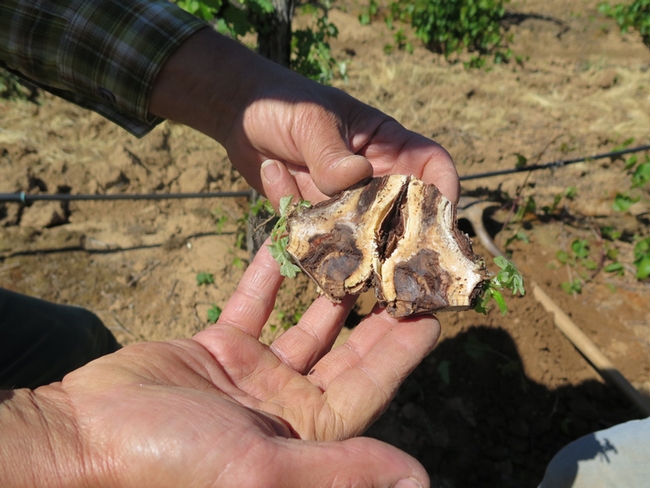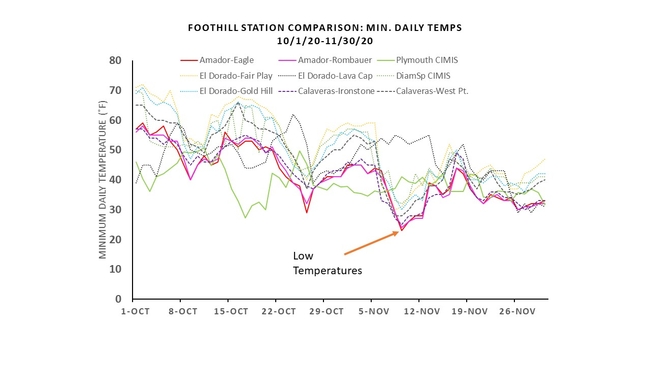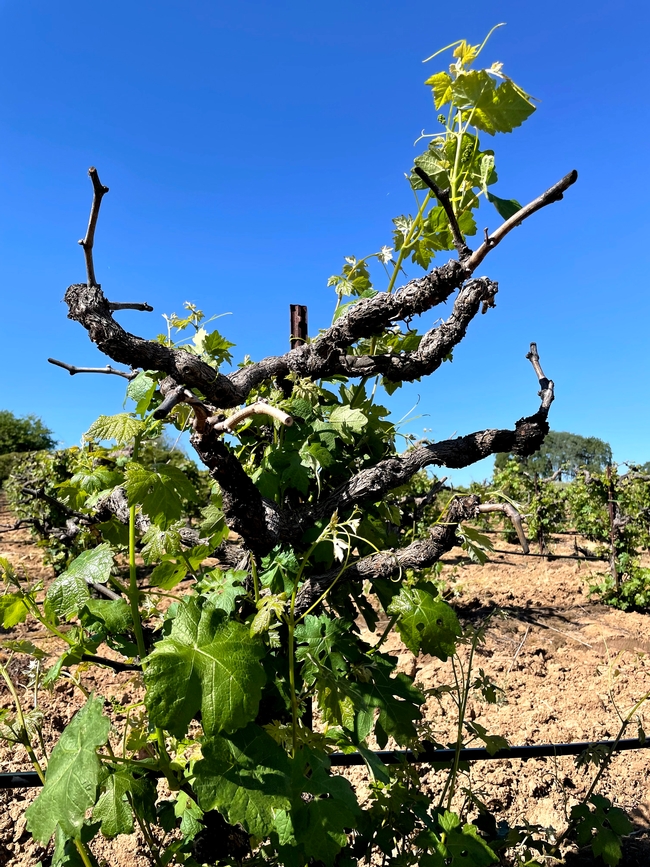
When cutting into the spurs, we see green tissue. But when some of the buds (those not pushing at all) are dissected, the primary bud appears brown-indicating dead tissue. Many of the growers told me that they think this is due to fall frost-and they are right!! (although I admit I was slow to believe it until I looked at the data)!
A look at our fall temperatures and corroborating news from our friends in Lodi agree: unusual early November temperatures in some locations dipped into the low 20s. This occurred at Amador stations and in Calaveras, but not in ElDorado county.
What confuses the situation at first glance is that not every vineyard is affected-and some are more severely affected-those that are dry farmed and certain varieties like Zinfandel- than others. Furthermore when we cut into the cordons of some vines, trunk disease is evident. Stress, from drought and often made worse by disease or root damage that further 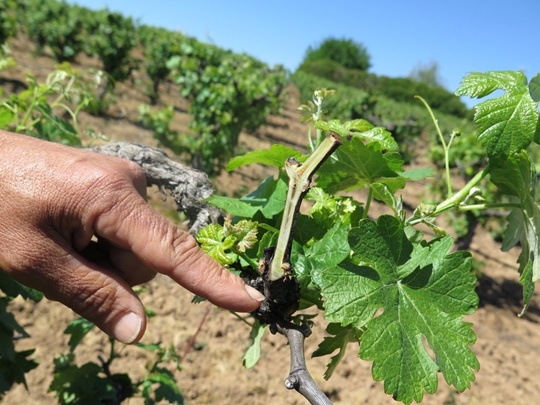
To help foothill growers understand what happened and what to do about it, I invited Kaan Kurtural, UCDavis Viticulture Specialist, and Akif Eskalen, UCDavis Plant Pathology Specialist, to a field day (the first in person meeting held since Covid!) at Don Potter's vineyard on May 26.
Kaan explained that what we are seeing in the foothills in not unique-many vineyards in California are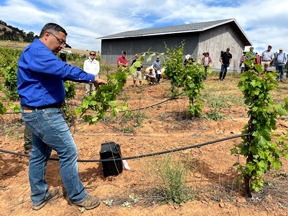
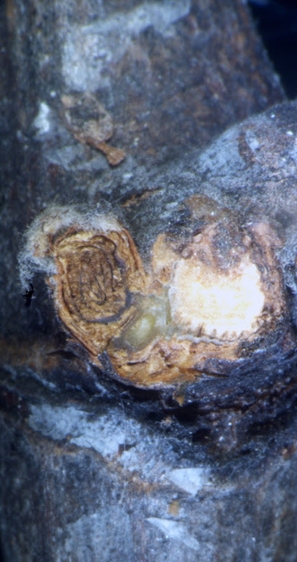
Kaan suggested the grower avoid fertilizer this year, since the vine's color is good, and need only sucker up to knee high to allow for herbicide applications to the berm. Irrigation is critical this year (as always), and will help grow a canopy that will "feed" the structure of the vine. And while crop is very light this year, the good news is that the vines will recover for next year. Cutting the irrigation by early September (or after one post-harvest irrigation in a "normal" year) will help the vines get ready for cold temperatures.
Kaan clarified that 110R-a popular rootstock used in the foothills-is considered "drought tolerant" because it doesn't completely evacuate water from it's vessels-it limits root "leakiness" under drought. 3309 is considered the most cold tolerant rootstock; and scions on 3309 always come out last since the rootstock doesn't "wake up". So, the rootstock can influence the scion, and the scion also will have an effect on when bud break occurs. Much to discuss again about rootstocks!-added attendee Tia Russell, Duarte nursery. Indeed-we will visit this in the future...
Akif Eskalen then talked to the group about trunk diseases, since the symptoms of trunk disease, poor shoot growth, can be confused with cold, dry weather issues; and, when investigating the poor growth this year, many vines with trunk disease were found incidentally. The fungi responsible form spores in the winter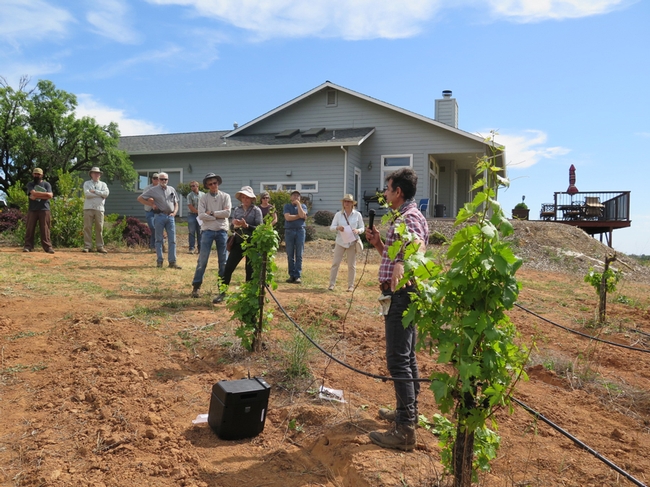
Akif and his lab have worked on testing many pruning wound protectants that are sprayed onto the pruning wounds soon after the cut is made. One of those that looks promising is Bio-Tam, a formulation of beneficial fungi called Trichoderma. The Bio-Tam can be applied using a sprayer-no hand painting of wounds!
All in all, another challenging year for grape growers. Many are re-evaluating their operations to look for cost savings. Thankfully, as Kaan said, "grapevines are very hard to kill", so if growers can ride out the season, the vines will continue to be there for us to nurture, harvest, and enjoy!
Attached Images:
